The box is around 38 cm by 35 cm and quite heavy for its size thanks to the 618 pieces contained within. The front of the box (above) is dominated by an image of the primary model, an airplane, with the secondary models - a speedboat and a helicopter - and the Creator 3-in-1 logo relegated to a series of small windows beneath. There's also a boxout top right which highlights the main play feature of the airplane. The back of the box gives the three models approximately equal billing, highlighting a play-feature of each. Overall, the understated, clean and minimalist branding and artwork is perfectly suited to the Creator theme.
The box contains 8 un-numbered bags of parts and 3 instruction booklets; I never get tired of seeing the instruction booklets nice and flat in their own bag with a cardboard backing. There's no DSS. The instruction booklets are A4 sized, and there's one for each of the featured models. The 84-page booklet for the airplane contains nothing but building instructions, while an inventory of parts and advertising for the 2013 Creator sets and LEGO Club are split between the significantly shorter speedboat and helicopter instruction booklets.
You can see a selection of some of the more noteworthy elements that are included in the set in the picture above (click to enlarge). Consistent with this being a Creator set, most of the constituent elements are fairly commonplace - the set is a good source of standard blue plates, for instance. That having been said, there are a few elements, most of which are blue slopes and wedges of various types, which are noteworthy by virtue of their relatively infrequent inclusion in sets; all bar one of the elements in the picture above can be found in less than ten sets in total. Rarest of the lot is the flat silver wagon wheel which is unique to this set, while the white 1 x 5 x 4 inverted arch is included in just two sets including this one, and the trans black windscreen has appeared in just three sets to date. A full inventory of parts can be found in the instruction booklet for the speedboat, and you can also find the parts inventory online here.
The first model I built was the speedboat, and you can see the cover of the instruction booklet above. LEGO has designated this the most basic of the three models, and I think the build is probably best described as a "good, old fashioned' building experience' which utilises lots of plates and basic bricks in 'traditional' LEGO colours and calls upon relatively few specialised parts. The fact that the part selection in this set is heavily geared to the primary model means that there's a lot of 'making do' involved in the secondary models; the compromises inherent in having to make the best use of the parts available took me back to my long lost childhood.... This is particularly evident in the mid-section of the hovercraft which, beneath the skin, is a patchwork of parts and colours that no right-minded builder would have used given a choice. Up until fairly late in the build I couldn't really see this model coming together very well at all, but the end result (picture below - click to enlarge) is better than I expected.
The back of the model is dominated by a huge fan which would seem to be far better suited to an airboat than a speedboat, but I'm no expert so I'll give LEGO the benefit of the doubt. The fan rotates, which I guess counts as a rudimentary play feature.
The main play feature of this model, apart of course from zooming it around on your carpet at home (there are six boat studs attached to the underside to reduce friction), is a simple mechanism for opening the speedboat's twin canopies. The canopies are popped open by pressing on the trio of flat silver modified tiles with grille located just in front of the rear fan (picture below - click to enlarge). There's also what LEGO describes as a luggage compartment in front of the cockpit which has a hinged lid that can be opened and closed.
As a fairly simple introductory build the speedboat does the job, although it's not really a design to sit and endlessly admire; good job too as no sooner had I built and photographed it then it was time to break the model down and get to work on the helicopter.
LEGO have designated the helicopter as 'Medium Build' in terms of build time and complexity. It was actually a pretty quick build - construction time didn't feel appreciably longer than that of the speedboat - and the build was fairly simple. I suspect therefore that it may have been classified as medium difficulty purely by virtue of the Technic mechanism that it includes. As was the case for the speedboat before, there were a substantial number of elements left over once the model was finished, and you can see the finished model below (click picture to enlarge).
If I'm honest, it doesn't look particularly great. Aside from the relatively unmemorable overall design, there's a distinct lack of polish close up, with awkward gaps left showing in various places, an at times untidy use of colour, and a somewhat messy feel overall. Look for instance at the helicopter's tail in the picture below, with its multi-coloured stack of 1 x 1 elements at the back, or even the 2 x 2 plate-sized gap just above the rear wheel.
One thing that the helicopter does have going for it compared with the speedboat is a more complex Technic mechanism; slide the protruding structure circled in red in the picture below backwards and forwards a few times and the main helicopter rotor spins quickly, building momentum and continuing to spin for a while afterwards even when you stop. It's a good way of exposing newcomers to the joys of Technic, not to mention making the model more interesting.
Having checked out the secondary builds I was more than ready to crack on and tackle the main attraction - the airplane. It was this that had caught my eye in the early publicity photos, and I'd been looking forward to seeing if it was as good "in the brick" as it looked in the pictures.
I'm delighted to report that I wasn't disappointed. The airplane is a proper build - substantial enough to be spread over a couple of leisurely hours, and with only a few tiny extra elements left over at the end. In terms of the part count, at 618 elements I guess it ranks as one of the bigger aircraft that LEGO have ever released; off the top of my head I could only think of four - Set 10024 Red Baron, Set 10177 Boeing 787 Dreamliner, Set 10124 Wright Flyer and Set 10226 Sopwith Camel - that have a higher piece count. The airplane is solid, robust and surprisingly heavy.
I think it looks as good in the brick as it does in pictures. It's a decent size - a little over 33 cm long and with a wingspan of around 40 cm - and it's well proportioned to my eye. The front is particularly nicely realised - the flat silver wagon wheel makes a perfect engine cowling - and the curved front of the fuselage flows elegantly back from the cowling over the wings and around the cockpit, while the tail is nice and curvy. Eight radial pistons fit neatly inside the engine cowling behind the propeller, and a pair of detailed exhausts are attached to opposite sides of the fuselage. If I have a criticism it's that the studded wings maybe jar a little against the studless fuselage, but it's a minor gripe and overall I think it's a great-looking model.
There are a number of notable play features. Front and centre is the mechanism for spinning the propeller which is similar to that found in the helicopter and which is activated by sliding the rear wheel of the airplane backwards and forwards; there's even a small hatch just behind the engine cowling which opens to reveal the inner workings of the mechanism. The front and rear sections of the canopy are hinged and lift up, and the rear section of the canopy also slides backwards to allow easier access to the cockpit. The cockpit itself features a flight stick, a couple of printed elements to simulate the airplane's instruments, and there's seating for two minifigures within (not provided). Both wings feature ailerons which can be manually angled upwards or downwards as you can see in the picture below (click to enlarge).
The underside of the airplane features additional moving parts, namely a working undercarriage which is more than strong enough to comfortably bear the weight of the finished model. The picture below (click to enlarge) shows one wheel retracted into the wing and the other wheel extended. The underside of the wings look a little messy; this could have been easily remedied with the addition of a few more white plates, but it's a minor complaint. This view gives you a better look at the rear wheel which you slide forwards and backwards to spin the propeller.
Overall this set provides the classic Creator experience. You get a reasonable number of parts for the money, although some will no doubt bemoan the lack of minifigure(s), and the primary model in particular is an enjoyable build with a ton of interesting play features. You're also getting a significantly extended building experience by virtue of the three sets of building instructions included. The two secondary models - the speedboat and helicopter - are OK but nothing special. The primary model is however excellent in my opinion and I'd have happily bought this set for the airplane alone. As of April 2014 the set is widely available in stores. While it retails for £49.99 / $59.99 I picked up my copy from Amazon at a significant discount, and at time of writing the set is 26% off RRP at Amazon's UK site and 20% off RRP at Amazon's US site so there's no need to pay RRP if you shop around. Unreservedly recommended.


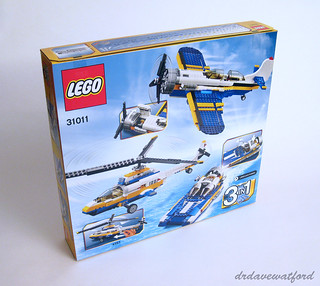




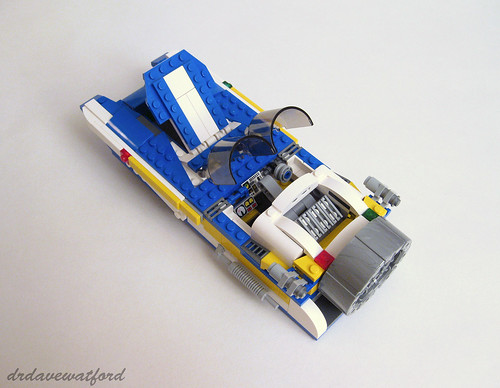
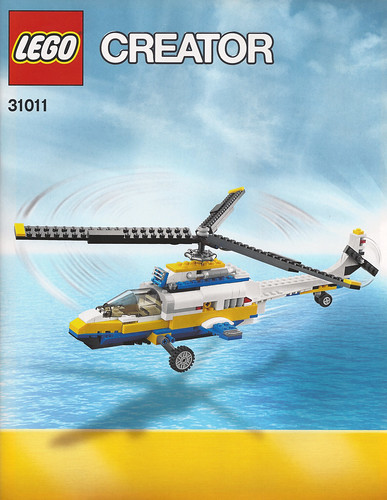
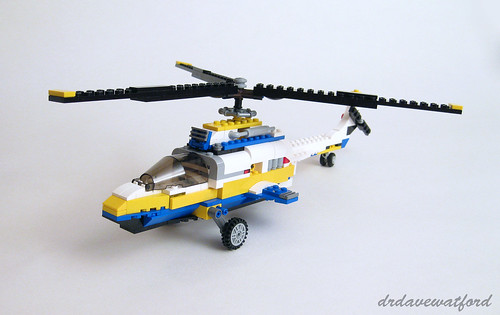
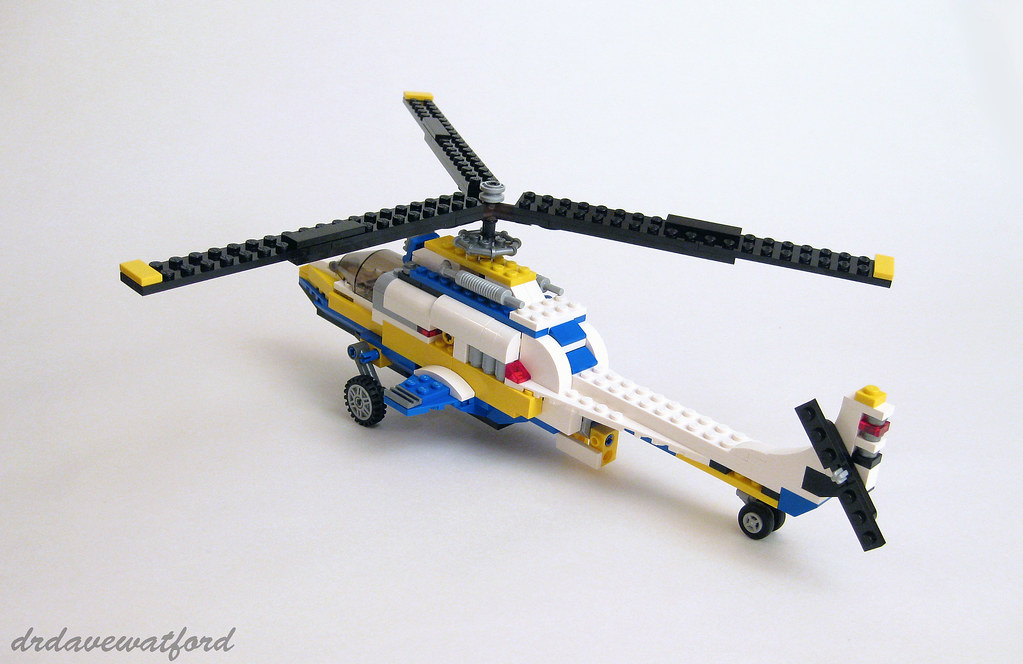
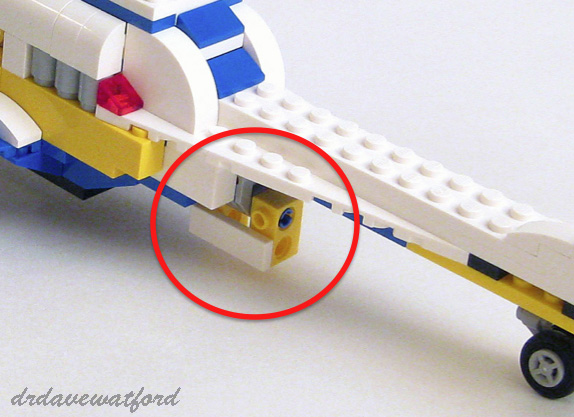
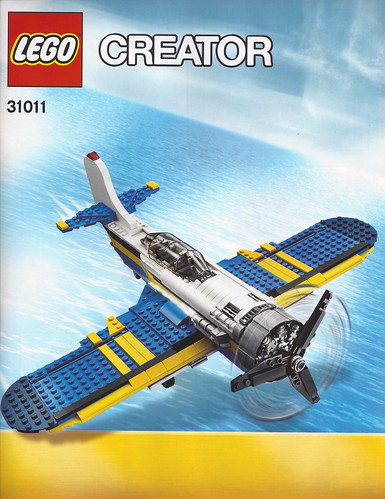
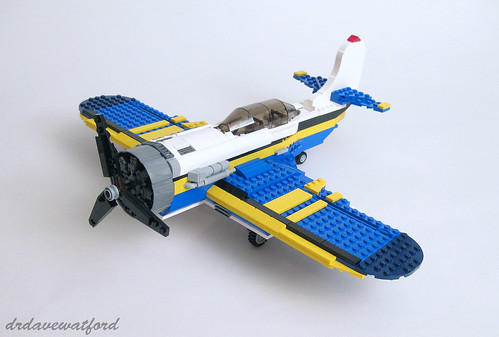
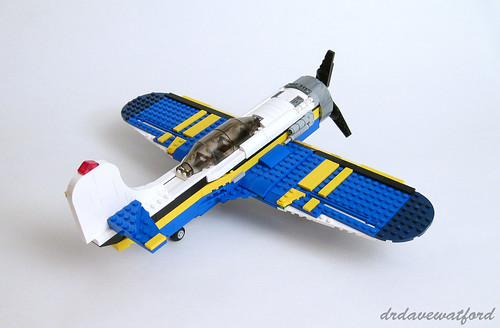
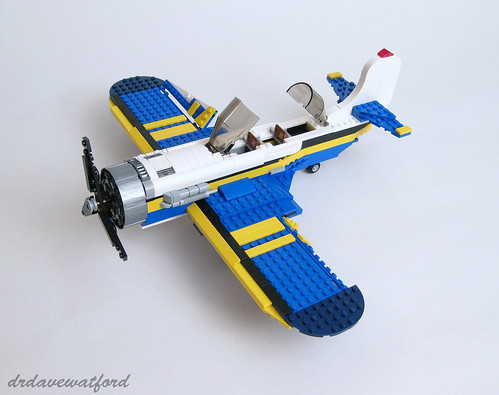
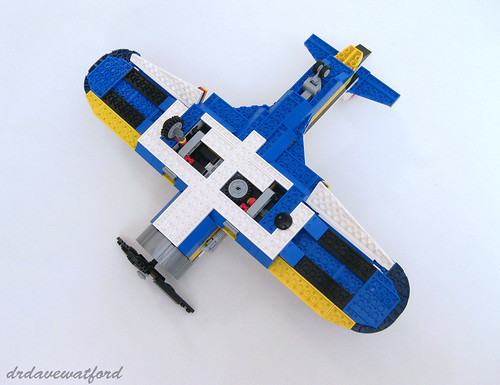
Thanks for the great review! I've been wanting to pick this set up ever since it came out a year and a half ago, but have never gotten around to it. I'm glad to say that I'm getting this set for Christmas (let's cross our fingers), so I wanted to take an in-depth look at this set to be reminded of all of the great play features! Once again, thanks for the amazing review.
ReplyDeleteNo problem - glad the review has whetted your appetite, and I hope the set is under your tree on Christmas Day!
Delete